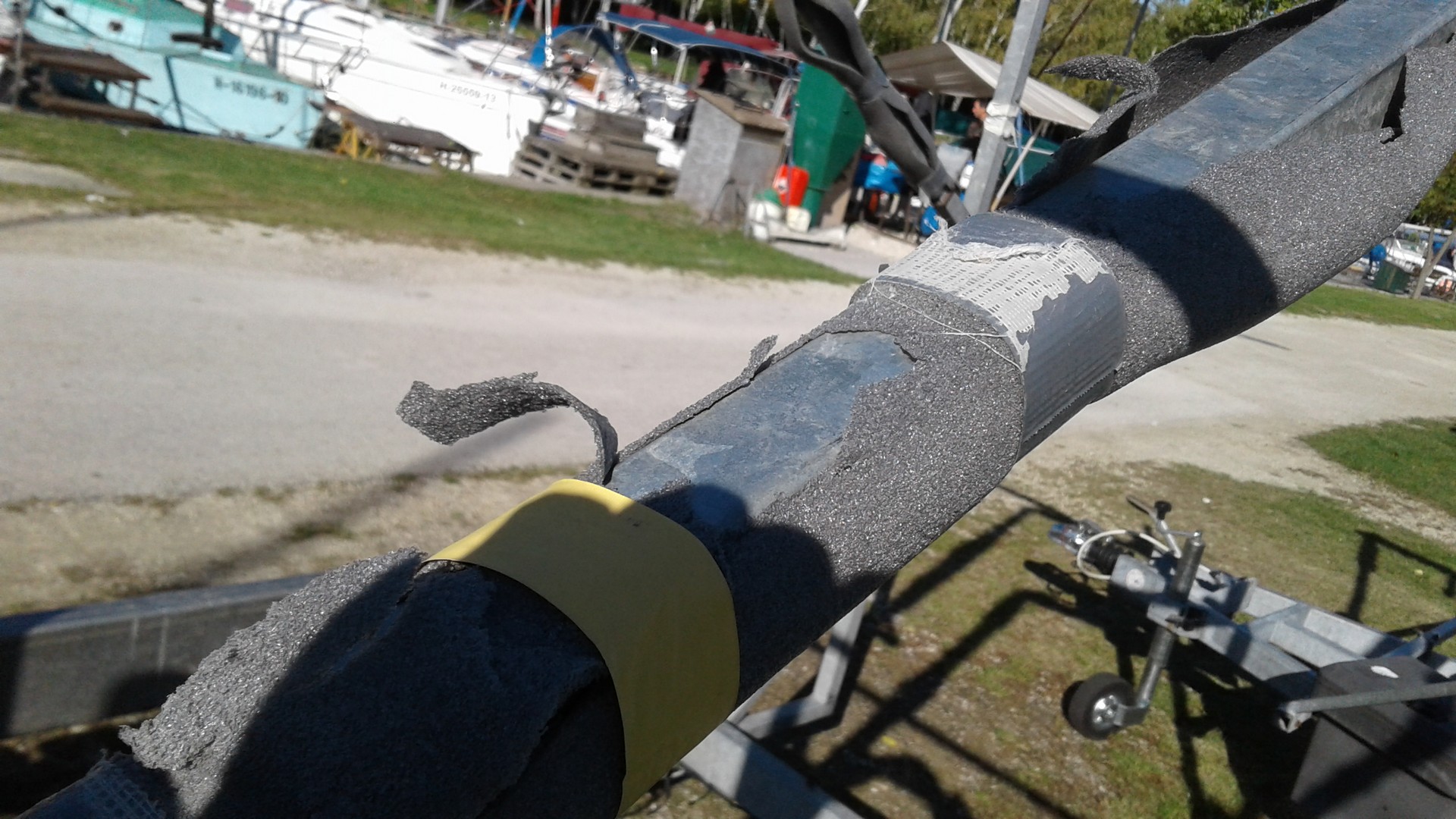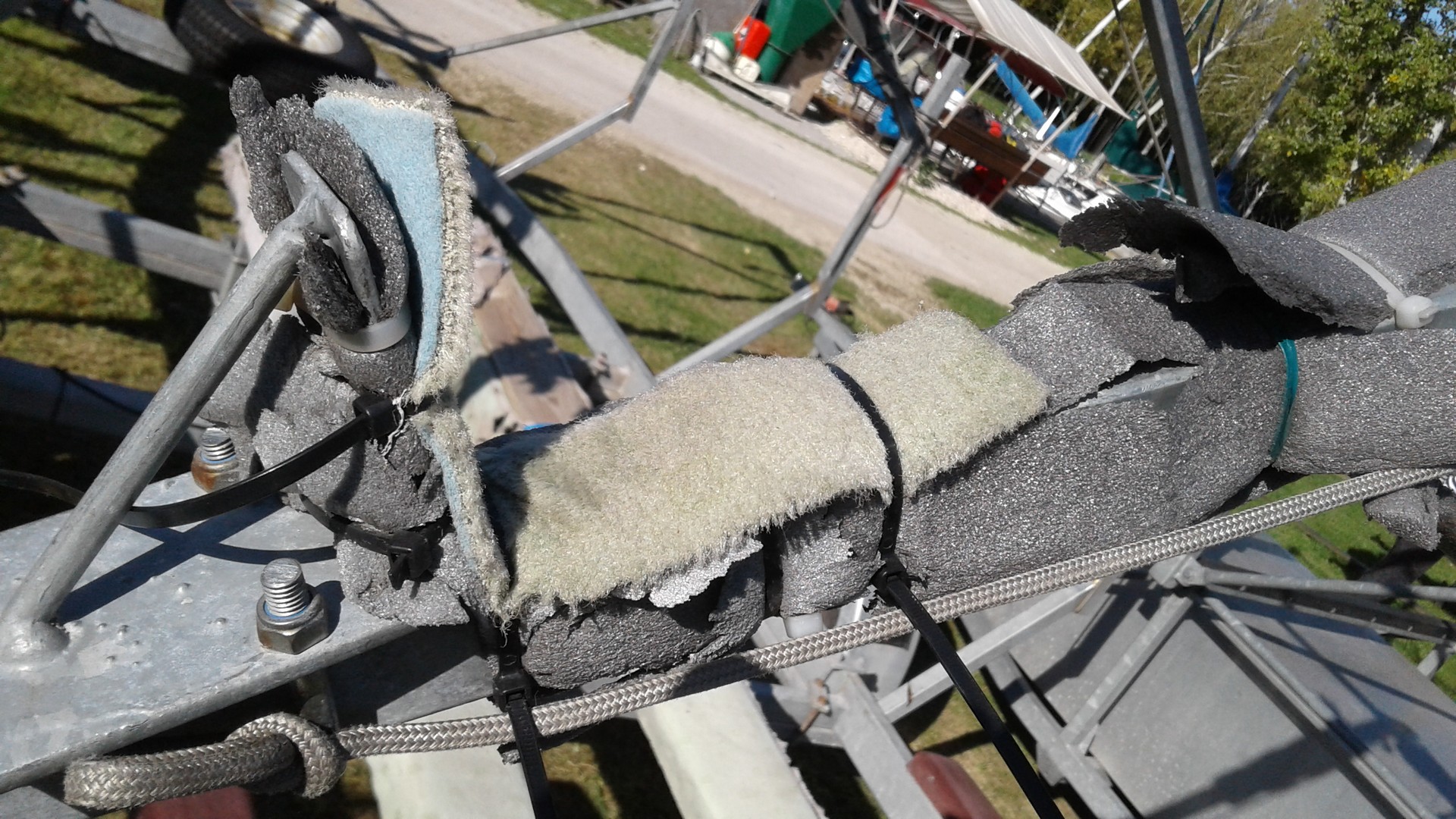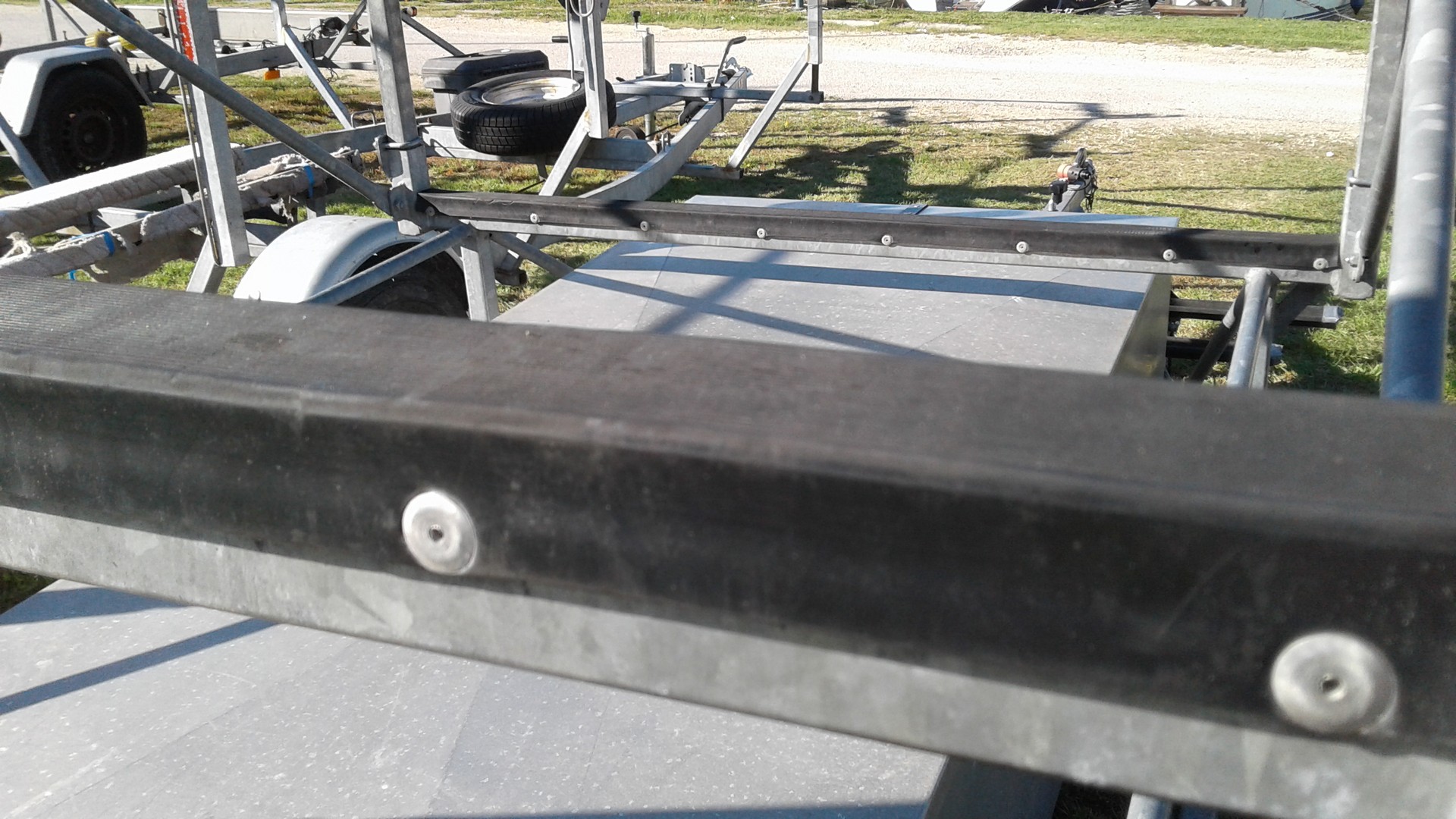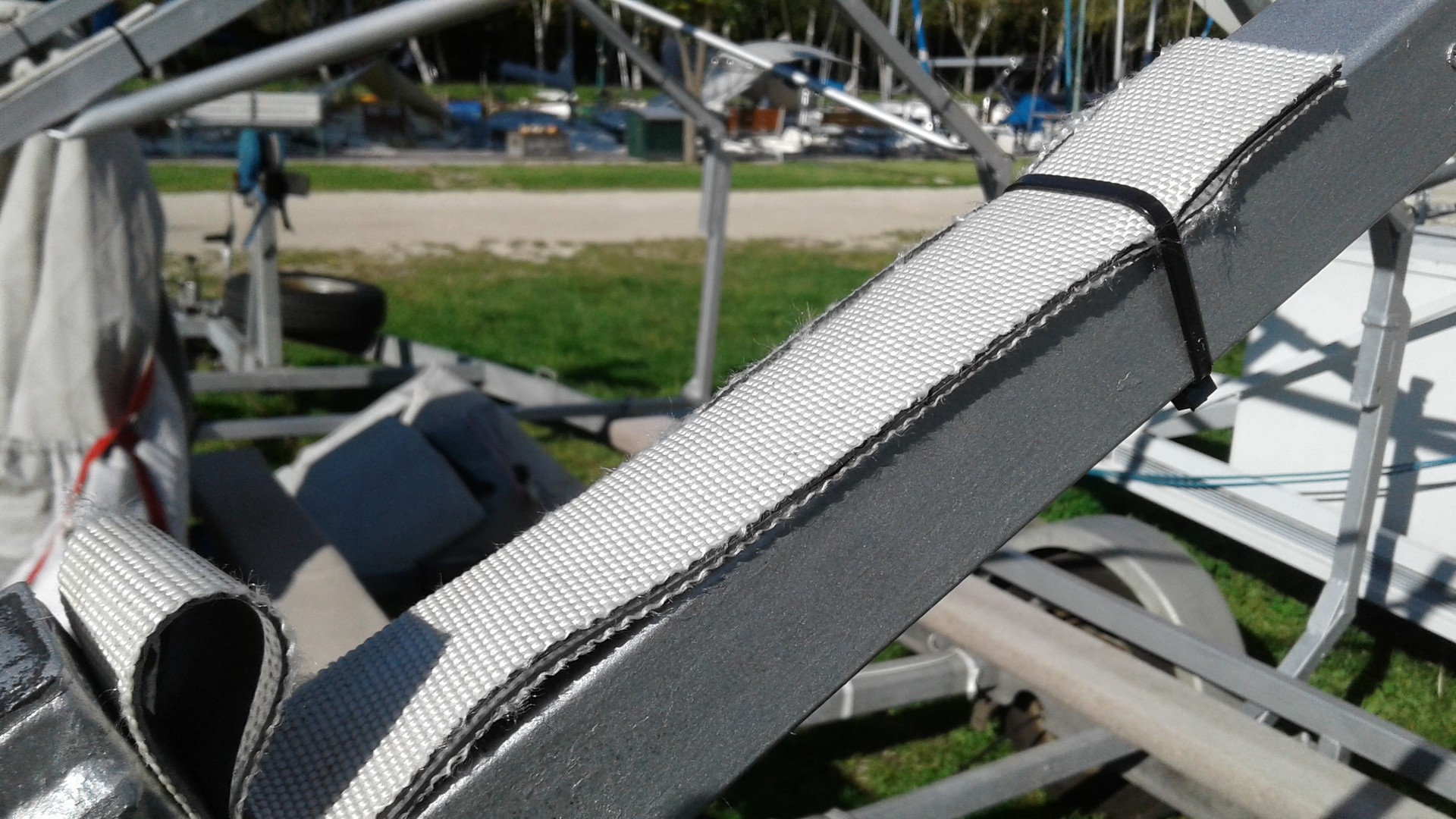Boat transportation
Hello everyone!
In this post, I’d like to share a few thoughts on boat transportation. At an earlier regatta, I took a few photos (randomly) of trailers to highlight some key points.
Transportation is the primary “wear-and-tear agent” on equipment, aside from the occasional bumps against the slipway, dock, or other boats. As you know, hulls are usually tied down very tightly to trailers. This is understandable since nobody wants their boat falling off during transport (it’s happened before). However, the hull and even the spars are subjected to significant tension during this process. I’ve seen Optimists crushed by oversized truck straps or strapped so tightly with regular straps that they cut into the hull. So, it’s best to click those buckles carefully!
Ideally, the boat is only tied down for the duration of transport. In less ideal situations, it may stay strapped to the trailer for days or even over a week. The good news is that even slightly loosening the straps can reduce tension and extend the boat’s lifespan. Of course, before moving the trailer, it’s wise to check the straps again to prevent an Optimist from falling due to this loosening.
This is one part of transporting a boat on a trailer worth paying attention to. The other part is padding the frame structure under the boat (or roof rack if using one). Note that the boat cover isn’t meant for this function—insufficient padding can actually lead to holes in the cover. Foam padding is often used for this purpose, as it’s easily available, but there’s a catch: it isn’t UV-resistant and can disintegrate quickly. This means that over time, the padding between the metal frame and the boat wears thin. At the Füred regatta, I saw several trailers with this issue.
Fortunately, there are good examples to follow:
- Wrapping foam with tape (ideally with UV-resistant tape)
- Using pieces of carpet
- Split garden hose or fire hose
- Specialized rubber profiles
Taking the time to pad the trailer frame is worth it because it can help prolong the boat’s lifespan, especially if you’re transporting it thousands of kilometers each year. I know, I know…the trailer belongs to the club, but it’s still your boat on it! :)
Bonus Tip:
For a truly perfect tie-down, place foam pieces
at the edges where the straps press against the hull (on an upside-down boat,
this is usually along the bottom edge beside the side panel), and under the
metal buckle as well.






